Just imagine you are swimming in the Ganges River, enjoying the cold sacred water that washes away your worries and cleanses your soul.
But suddenly, your feet touch something mobile inside the water. It's hard as a rock, but the funny part is: It's not a rock. It's a Mugger Crocodile, a commonly found dangerous denizen in the Ganges River.
Sounds terrifying, right? The Indian rivers are full of such creatures, ranging from dangerous crocodiles to aggressive freshwater sharks.
These deadly creatures are always lurking below the water's surface, camouflaging themselves to catch their unsuspecting prey.
For instance, gharials from the above may look like rocks, but they are deadly predators waiting for the perfect moment to strike.
So, in this article, we'll explore the top 10 deadly aquatic assassins, which haunt the rivers of India and strike fear into the hearts of those who dare to venture into their territory.
From the notorious bull sharks to the elusive goonch catfish, these lethal lurkers are a reminder of the dangers beneath the surface of India's rivers.
Recommended For You| List of Top 10 Countries with Highest Gold Reserves [2024]
List of Indian River's Most Dangerous Creatures
After thoroughly researching the National Fisheries Development Board status report and various related studies, we have concluded a list of the 10 deadly denizens of India's rivers that pose significant threats to the human population.
Our methodology included analysing reports on species behaviour, historical data on human interactions, and documented incidents of attacks.
We prioritised species known for their aggressive tendencies and those that inhabit areas frequented by humans. Additionally, we considered the ecological impact of these creatures and their roles within their environments.
By synthesising information from scientific literature and media reports, we compiled a comprehensive list that highlights the most dangerous aquatic animals in Indian rivers, ensuring that our findings are both accurate and informative for public awareness and safety.
| Rank | Common Name | Scientific Name | Notable Characteristics |
| 1 | Bull Shark | Carcharhinus leucas | Highly aggressive; responsible for numerous attacks on humans in freshwater environments. |
| 2 | Saltwater Crocodile | Crocodylus porosus | Largest reptile; known for fatal attacks on humans, particularly in rivers and estuaries. |
| 3 | King Cobra | Ophiophagus hannah | World's longest venomous snake; highly territorial and can be aggressive when threatened. |
| 4 | Russell's Viper | Daboia russelii | Highly venomous; responsible for many snakebite incidents and fatalities in India. |
| 5 | Goonch Catfish | Bagarius yarrelli | Large predatory fish known for attacking humans; can reach significant sizes. |
| 6 | Mugger Crocodile | Crocodylus palustris | Dangerous if provoked; can inflict serious injuries with powerful jaws. |
| 7 | Electric Eel | Electrophorus electricus | Can deliver powerful electric shocks; poses risk to humans if provoked. |
| 8 | Common Krait | Bungarus caeruleus | Venomous snake that can cause paralysis; potentially fatal without treatment. |
| 9 | Stingray | Various species | Possesses venomous spines that can cause severe pain and injury if stepped on. |
| 10 | Piranha | Various species | Known for sharp teeth and aggressive feeding behaviour; potential threat in large groups. |
| 11 | Tigerfish | Various species | Fierce predators with sharp teeth; can pose a danger to smaller fish and potentially humans. |
| 12 | Snakehead Fish | Various species | Aggressive and predatory; capable of surviving out of water for extended periods. |
| 13 | Freshwater Eels | Various species | Some can deliver painful bites; may pose risks to swimmers but generally not aggressive. |
| 14 | Gharial | Gavialis gangeticus | Less aggressive than crocodiles but can inflict serious injuries if threatened. |
| 15 | River Dolphin | Platanista gangetica | Generally not aggressive; unpredictable movements can pose risks in certain situations. |
| 16 | Gollum Snakehead | Aenigmachanna gollum | Recently discovered fish; potentially predatory but not well-known for aggression. |
| 17 | Giant Mottled Eel | Anguilla marmorata | Can grow large and may bite if threatened, though generally not aggressive towards humans. |
| 18 | Goliath Tigerfish | Hydrocynus goliath | Known for actively attacking humans; large size and sharp teeth make it particularly dangerous. |
| 19 | Red-Bellied Piranha | Pygocentrus nattereri | Known for aggressive feeding frenzies; can attack larger prey including humans when in groups. |
| 20 | Candiru (Vampire Fish) | Vandellia cirrhosa | Notorious for swimming into the urethra of humans; its barbs can cause severe pain and injury. |
See More| List of Top 10 Major Dams in India
1. Bull Shark (Carcharhinus leucas)

Source: Detroit Free Press
- Aggressive Behaviour: Renowned for its unpredictable aggression, the bull shark is considered one of the most dangerous sharks in the world.
- Physical Appearance: It has a robust body and flat snout and can grow up to 11 feet long, often displaying a greyish top with a white underside.
- Habitat: Found in both saltwater and freshwater, this species is known to swim upstream into rivers and estuaries, frequently encountered near urban areas.
- Attacking Style: As an ambush predator, it attacks from below with incredible speed, often targeting swimmers and surfers.
- Diet: Carnivorous, feeding on fish, dolphins, and even other sharks; it is an opportunistic feeder that consumes anything available.
- Human Encounters: Responsible for numerous attacks on humans, particularly in rivers where they can be found near swimming areas.
- Reproduction: Viviparous; females give birth to live young, producing up to 13 pups at a time.
- Distribution: Commonly found in major river systems like the Ganges and Vaitarna River in Maharashtra.
- Conservation Status: Listed as Near Threatened due to overfishing and habitat loss.
- Notable Incidents: Increasing urbanisation has led to more encounters between bull sharks and humans.
2. Saltwater Crocodile (Crocodylus porosus)

Source: BBC Wildlife Magazine
- Largest Reptile: The saltwater crocodile is the largest living reptile, with some individuals exceeding 20 feet in length.
- Physical Characteristics: It has a dark olive or brownish colour with a broad snout; its powerful jaws can exert immense pressure.
- Habitat: Inhabits coastal brackish mangrove swamps, river deltas, and freshwater rivers along India's eastern coast.
- Attacking Style: An ambush predator that hides underwater or among vegetation, lunging at prey with incredible speed.
- Diet: Opportunistic feeder; diet includes fish, birds, mammals, and occasionally other reptiles.
- Human Encounters: Known for fatal attacks on humans, conflicts often arise as they inhabit areas near human settlements.
- Reproduction: Females lay eggs in nests made of vegetation; maternal care is observed until the hatchlings are independent.
- Distribution: Found primarily in Odisha's Bhitarkanika National Park and the Sundarbans mangroves.
- Conservation Status: Listed as Least Concern but faces threats from habitat loss and hunting for skin and meat.
- Notable Incidents: Numerous attacks reported in Odisha highlight the dangers posed by increasing crocodile populations.
3. Goonch Catfish (Bagarius yarrelli)
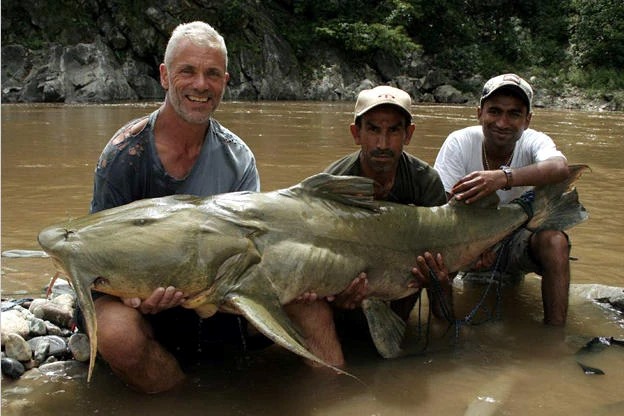
Source: Marine & Freshwater Wiki - Fandom
- Size and Strength: Can grow up to 10 feet long; one of the largest freshwater catfish species in India.
- Physical Appearance: Dark brown or black body with whisker-like barbels; large mouth adapted for catching prey.
- Habitat: Prefers fast-flowing rivers and streams in northern India, particularly in the Kali River region.
- Attacking Style: Ambush predator that uses its size to overpower prey; known for aggressive feeding behaviour during spawning season.
- Diet: Carnivorous; feeds on smaller fish, crustaceans, and even carrion found in river waters.
- Human Encounters: Infamous for alleged attacks on humans, stories of goonch catfish consuming human remains have circulated among locals.
- Reproduction: Spawns during monsoon seasons; females lay eggs in shallow river areas where they are protected from predators.
- Distribution: Found primarily in the Himalayan foothills and major river systems like the Ganges and Brahmaputra.
- Conservation Status: Not currently threatened but faces risks from overfishing and habitat degradation.
- Notable Incidents: Reports of goonch catfish attacking swimmers have led to increased caution among locals.
4. Mugger Crocodile (Crocodylus palustris)
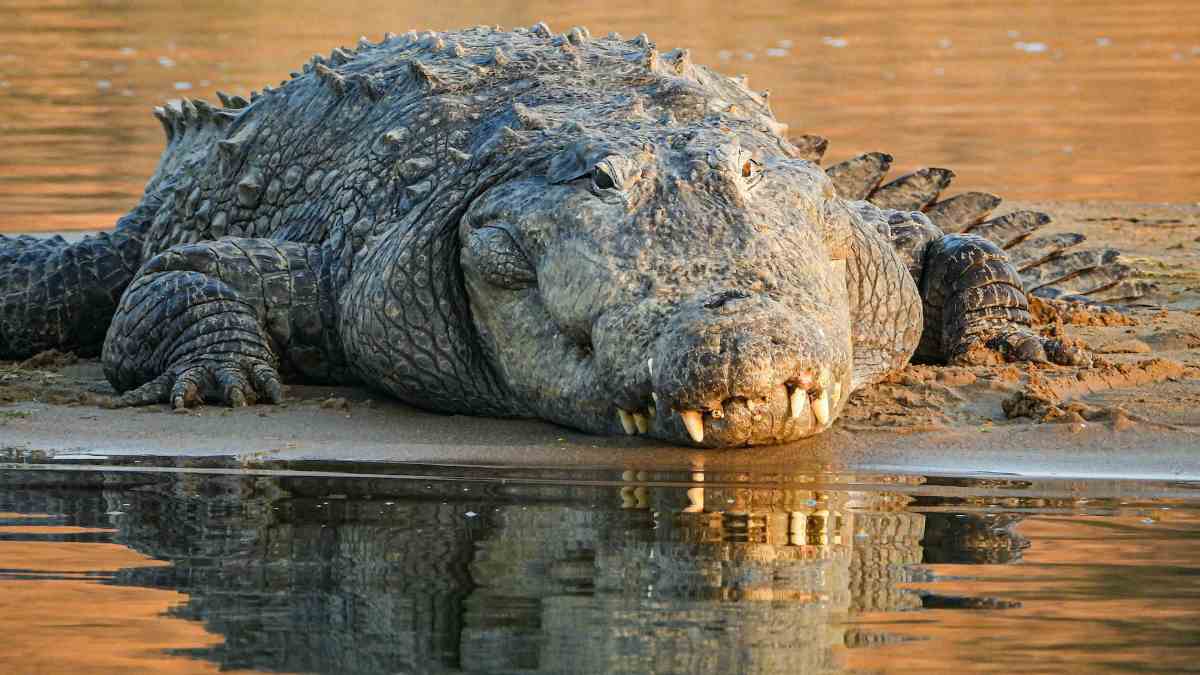
Source: Roundglass | Sustain
- Physical Characteristics: Medium-sized crocodile with a broad snout; adults can reach lengths of up to 13 feet.
- Habitat Preference: Inhabits freshwater lakes, rivers, marshes, and irrigation canals across India.
- Attacking Style: Typically ambushes prey from the water's edge or while submerged; can deliver powerful bites when attacking.
- Diet: Primarily piscivorous but will also consume birds and small mammals when available.
- Human Encounters: Conflicts arise when muggers venture into populated areas; attacks are rare but can be serious when they occur.
- Reproductive Behaviour: Nesting occurs during the dry season; females build nests on riverbanks to protect their eggs from flooding.
- Distribution Range: Found throughout India but most commonly reported in Gujarat, Rajasthan, and Madhya Pradesh near river systems.
- Conservation Status: Listed as Vulnerable due to habitat loss and hunting pressures; conservation efforts are underway to protect populations.
- Notable Incidents: Increased sightings near human settlements have led to heightened awareness of potential conflicts.
5. Common Krait (Bungarus caeruleus)
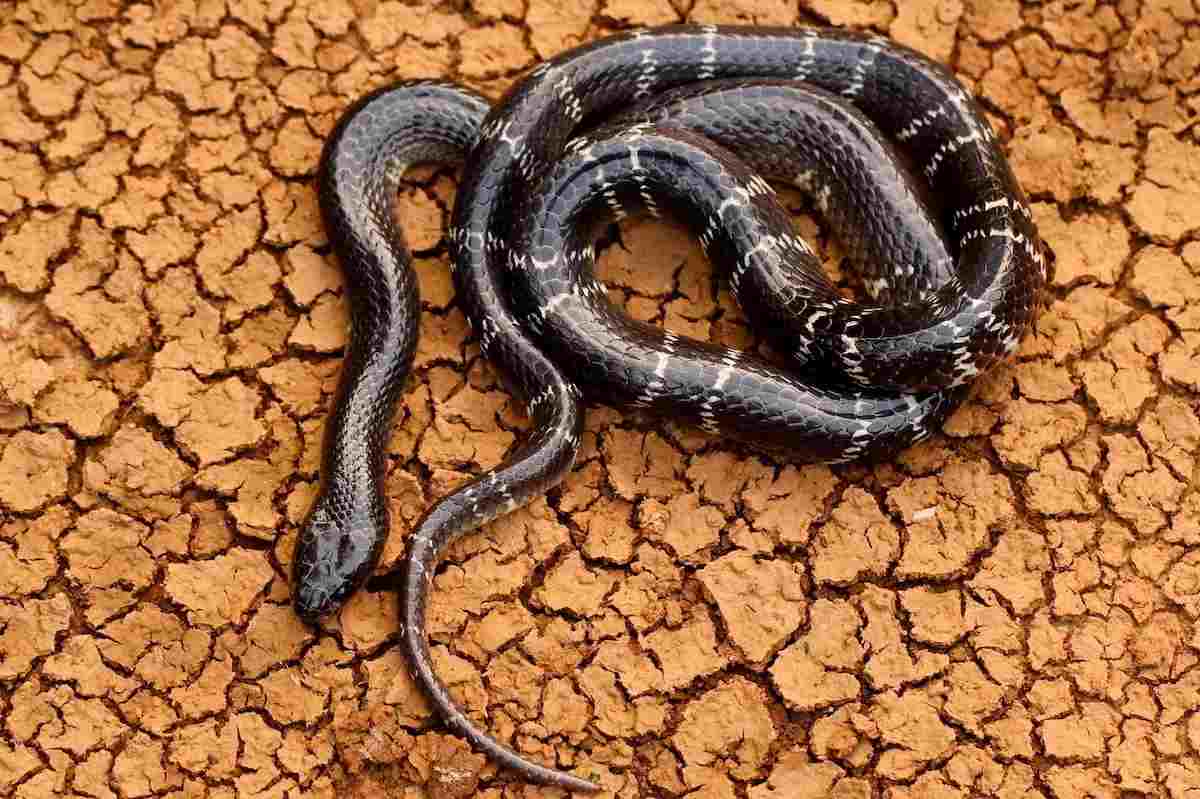
Source: Roundglass | Sustain
- Venomous Nature: One of the most venomous snakes in India; its bite can lead to respiratory failure if untreated.
- Physical Appearance: Slender body with smooth scales; typically black with white or yellow bands that may fade with age.
- Habitat Range: Prefers agricultural fields, forests, and riverbanks across India but is often found near human habitation due to prey availability.
- Attacking Style: Nocturnal hunter that relies on stealth; bites are often painless initially but can be deadly if not treated quickly.
- Dietary Habits: Feeds primarily on other snakes (including venomous species) and small vertebrates like frogs and lizards.
- Human Encounters: Bites are common during monsoon season when snakes are more active; fatalities occur without prompt medical attention.
- Reproductive Behaviour: Oviparous species that lay eggs in hidden locations; young are independent at birth and highly venomous from a young age.
- Distribution Areas: Found throughout India but particularly common in states like Uttar Pradesh, Bihar, and West Bengal near river systems.
- Conservation Status: Not currently threatened but faces risks from habitat destruction and human encroachment into natural areas.
- Notable Incidents: Numerous cases of snakebite fatalities highlight the danger posed by this elusive species.
For You| The Seven Sisters of India: A Journey Through the Northeast
6. Russell's Viper (Daboia russelii)
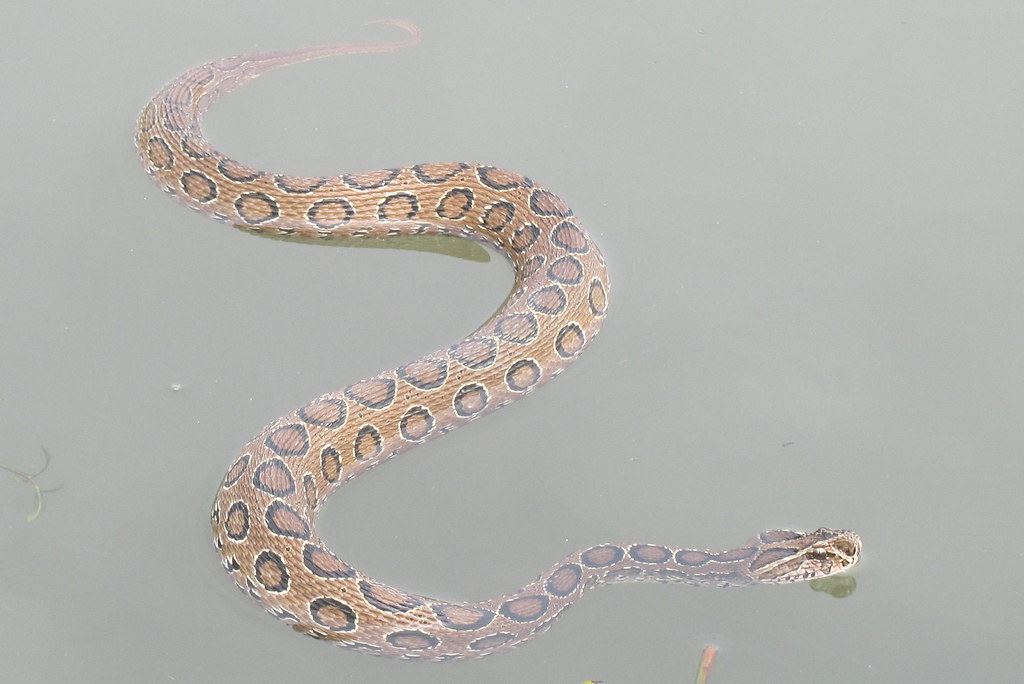
Source: Flickr
- Highly Venomous Snake: Known for its potent hemotoxic venom that affects blood coagulation; responsible for many snakebite incidents in India.
- Physical Characteristics: Distinctive pattern of brown or grey with darker bands along its body; can grow up to 5 feet long.
- Habitat Preference: Commonly found in grasslands, scrub forests, and near water bodies throughout India.
- Attacking Style: Ambush predator that relies on camouflage; strikes quickly when prey is within range.
- Dietary Preferences: Feeds on rodents, lizards, frogs, and other small animals.
- Human encounters: Frequent encounters lead to many bite cases each year; fatalities occur without timely medical intervention.
- Reproductive Behaviour: Oviparous species that give birth to live young (ovoviviparous); young snakes are born fully formed.
- Distribution Range: Widely distributed across India but more common in southern regions like Tamil Nadu and Kerala near river systems.
- Conservation Status: Listed as Least Concern but faces threats from habitat loss due to agriculture expansion.
- Notable incidents: A high incidence of bites during agricultural activities leads to increased awareness about their presence.
7. Electric Eel (Electrophorus electricus)

Source: Britannica
- Unique Ability: Capable of generating electric shocks up to 600 volts for hunting and self-defence.
- Physical Appearance: Long cylindrical body reaching lengths of up to 10 feet with a dark brown or grey colour.
- Habitat: Prefers slow-moving freshwater rivers and streams within tropical regions but has been reported in parts of India.
- Attacking Style: Uses electric shocks to stun prey before consuming them whole.
- Diet: Carnivorous diet consisting mainly of fish but will also consume amphibians when available.
- Human Encounters: Rarely attacks humans unless provoked; shocks can cause serious injury or even death if contact is made repeatedly.
- Reproductive Behaviour: Oviparous species that lay eggs in nests made by males during the breeding season.
- Distribution: Primarily found in tropical river systems but has been recorded in Indian waters due to environmental changes over time.
- Conservation Status: Not currently threatened but faces risks from habitat degradation due to pollution.
- Notable Incidents: Instances of electric shocks causing injuries highlight the need for caution around these creatures.
8. Stingray (Various Species)
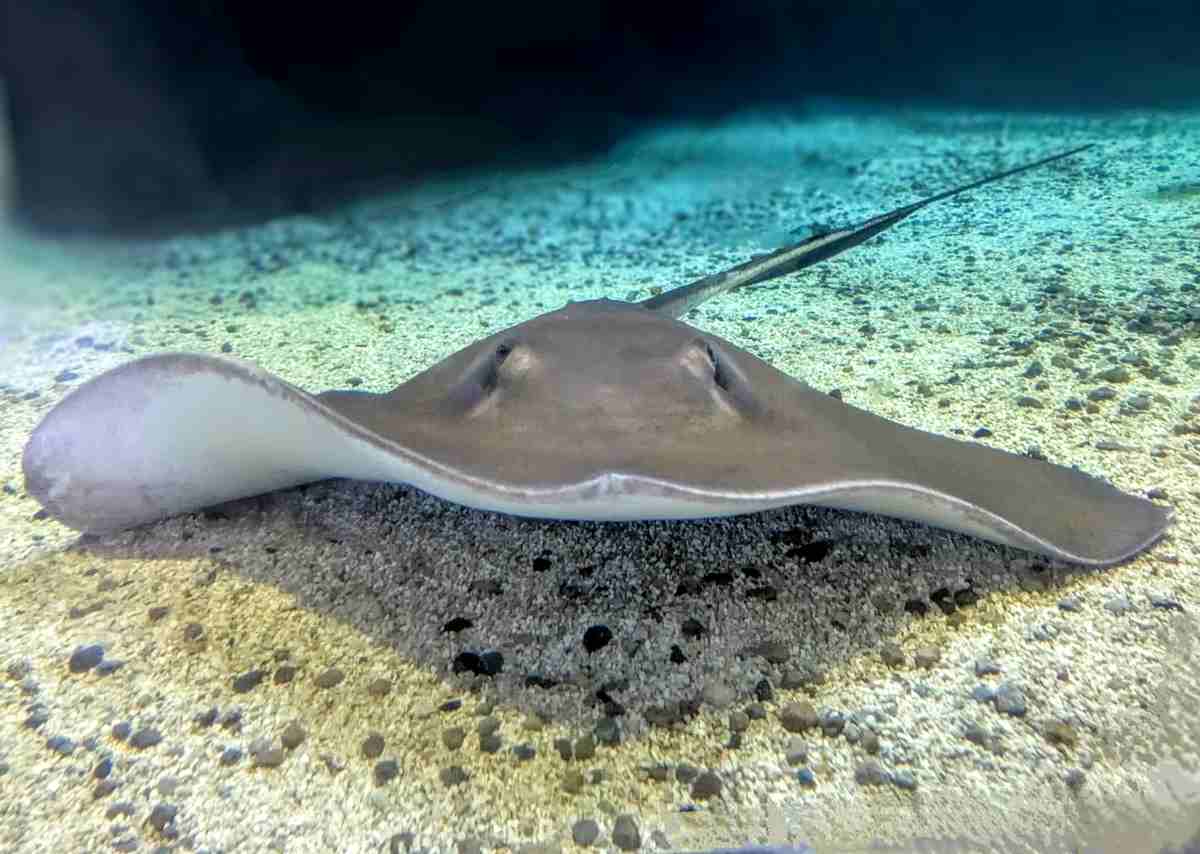
Source: Fort Wayne Children's Zoo
- Venomous Spines: Possess barbed spines on their tails capable of delivering painful venomous stings when stepped on or handled carelessly.
- Physical Appearance: Flat-bodied fish with a disc-shaped body ranging from small (1 foot) to large (over 6 feet).
- Habitat Preference: Inhabits shallow coastal waters but can also be found in freshwater rivers where they often bury themselves under sand or mud.
- Attacking Style: Generally non-aggressive unless threatened; uses its spine defensively if approached too closely.
- Dietary Habits: Feeds primarily on crustaceans, molluscs, and small fish, using its flat body to ambush prey from below.
- Human Encounters: Injuries occur primarily due to accidental encounters while wading or swimming in shallow waters where they reside.
- Reproductive Behaviour: Ovoviviparous species that give birth to live young after internal fertilisation occurs within females’ bodies.
- Distribution Range: Found throughout coastal regions across India’s western coastline as well as some river systems inland.
- Conservation Status: Not currently threatened, but populations can decline due to habitat destruction or fishing practices affecting their numbers.
- Notable incidents: Reports of stingray injuries increase during peak tourist seasons at popular beaches.
9. Piranha (Various Species)

Source: Animals | HowStuffWorks
- Sharp Teeth: Known for their razor-sharp teeth capable of inflicting severe bites during feeding frenzies triggered by blood or distress signals nearby.
- Physical Characteristics: Small-bodied fish averaging between 1–2 feet long are characterised by a deep body shape with silver scales adorned by red or orange hues around their bellies depending on the species type present locally within rivers across India’s landscape.
- Habitat Preference: Typically inhabits slow-moving rivers, lakes, and floodplains where they form schools while hunting together.
- Attacking Style: Highly social predators that attack en masse when food sources are present; known instances include biting humans who enter their territory.
- Dietary Habits: Primarily carnivorous, feeding mainly on smaller fish, insects, and plant matter; opportunistic feeders willing to scavenge if necessary.
- Human Encounters: Rarely attack humans unless provoked; however, there have been cases reported, especially during spawning season when aggression levels rise significantly.
- Reproductive Behaviour: Oviparous species lay eggs within nests constructed by females; parental care is provided until the fry becomes independent.
- Distribution Range: Found mainly within Amazonian basin regions, yet some varieties have migrated into Indian waterways due to environmental changes over time.
- Conservation Status: Not currently threatened, although local populations may fluctuate based upon fishing pressures exerted upon them.
- Notable Incidents: Instances involving Piranhas attacking swimmers highlight the need for caution while engaging in aquatic activities.
10. Tigerfish (Various Species)
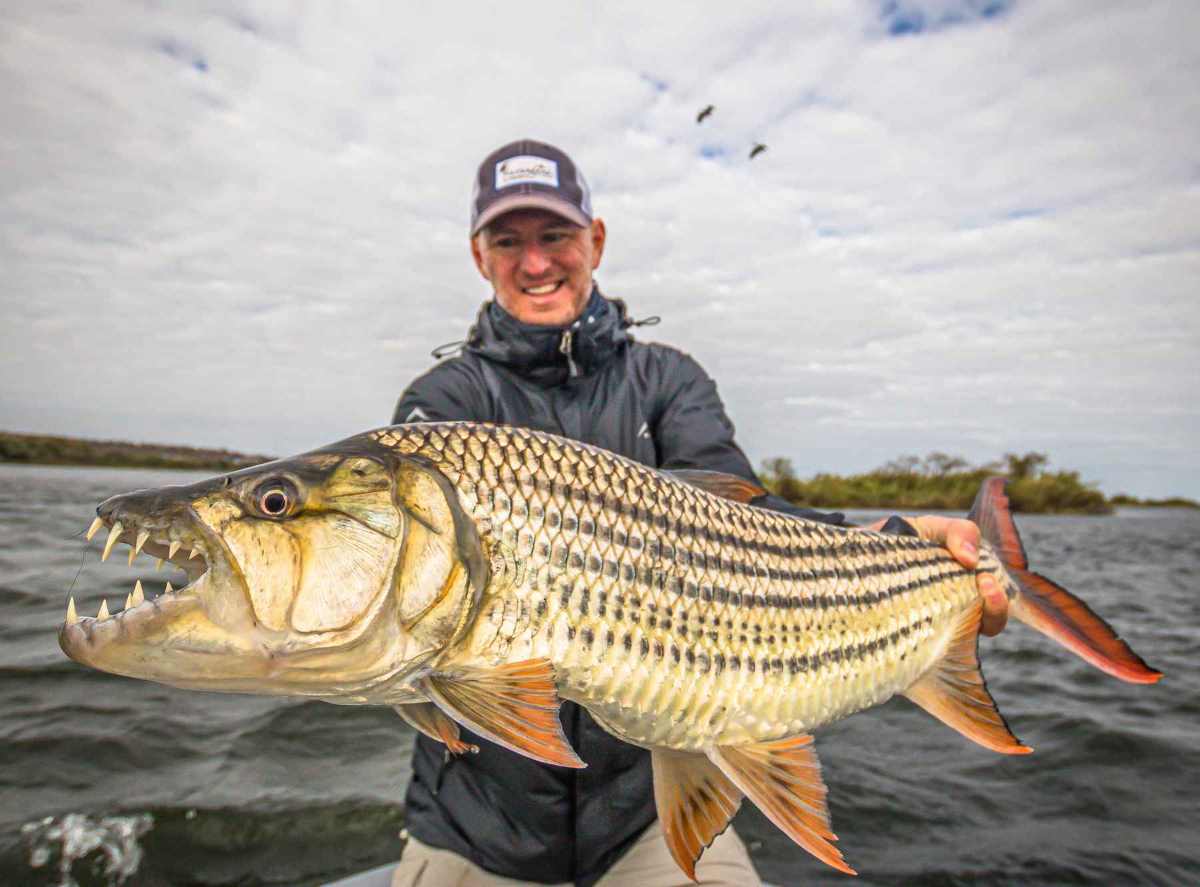
Source: Hatch Magazine
- Fierce Predators: Renowned for their aggressive hunting style, tigerfish possess sharp teeth designed specifically for tearing flesh apart quickly.
- Physical Characteristics: Streamlined bodies averaging between two-three feet long, adorned with distinctive tiger-like stripes running along sides, creating a camouflage effect against surroundings.
- Habitat Preference: Typically inhabit freshwater lakes, rivers, and swamps where they prefer fast-moving waters rich with prey opportunities nearby.
- Attacking Style: Utilise speed combined with sharp teeth, enabling them to catch unsuspecting prey off guard before delivering lethal bites swiftly.
- Dietary Habits: Primarily piscivorous, consuming smaller fish predominantly while also targeting amphibians if available nearby.
- Human Encounters: Rarely attack humans unless provoked; however, reports indicate potential danger exists, especially amongst fishermen trying to catch them directly.
- Reproductive Behaviour: Oviparous species lay eggs within shallow waters during the breeding season, ensuring safety from predators lurking deeper down below surface levels.
- Distribution Range: Found across various river systems throughout Africa & Asia, including certain regions within Indian territory where environmental conditions align favourably towards survival needs met adequately enough.
- Conservation Status: Not currently considered endangered; however, localised threats exist due to fishing practices impacting overall population numbers negatively over a time observed closely together consistently.
- Notable Incidents: Increasing encounters reported suggest heightened awareness required around these fierce aquatic hunters while engaging in recreational activities outdoors safely.
Conclusion
The rivers of India are teeming with diverse aquatic life, including some creatures that can be considered dangerous to humans. This list of the 10 most dangerous creatures highlights the unique characteristics and behaviours of these animals, showcasing their role in the ecosystem.
From the formidable bull shark and saltwater crocodile to the stealthy goonch catfish and venomous stingrays, each species has adapted to its environment in fascinating ways.
These creatures, while potentially dangerous, are not inherently harmful. They play crucial roles in maintaining the balance of river ecosystems.
For instance, the Ganges river dolphin is not aggressive but is a symbol of biodiversity and conservation efforts in India. Understanding these animals helps foster respect for nature and emphasises the importance of coexisting with wildlife.
As we continue to explore and enjoy India's rivers, awareness and education about these creatures can enhance safety while promoting conservation.
Protecting their habitats ensures that future generations can appreciate the beauty and complexity of these remarkable river dwellers. Ultimately, recognising their significance is vital for both human safety and ecological health.
Also Read| List of the Top 10 Fittest Countries in the World! Where Does India Stand?
Comments
All Comments (0)
Join the conversation